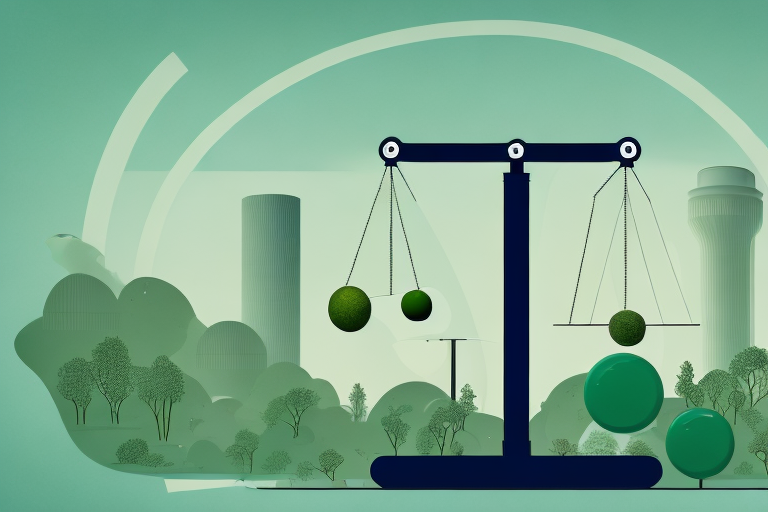Environmental Justice: Achieving Fairness for All
Environmental justice is a critical concept that aims to achieve fairness for all individuals, regardless of their race, ethnicity, or socioeconomic status, when it comes to the distribution of environmental benefits and burdens. At its core, environmental justice acknowledges the interplay between environmental issues and social justice, recognizing that marginalized communities often bear a disproportionate burden of environmental harm. In order to address these disparities, it is important to understand the key principles of environmental justice and the historical context that has shaped this movement.
Understanding the Concept of Environmental Justice
The concept of environmental justice seeks to rectify the fact that certain communities face a significantly higher level of exposure to environmental hazards. These hazards can include pollution, toxic waste sites, and other harmful environmental factors. Environmental justice aims to ensure that every individual has the right to live in a safe and healthy environment, regardless of their background or socioeconomic status.
One of the fundamental aspects of environmental justice is the recognition that the environment and social justice are intertwined. The fight for environmental justice goes beyond just protecting the natural world – it is about addressing systemic inequities and ensuring that no community is left behind. By understanding this intersection, we can begin to develop strategies to promote fairness and equity in our environmental policies and practices.
Environmental justice is not a new concept. It has its roots in the civil rights movement of the 1960s, when activists began to draw attention to the disproportionate burden of pollution and environmental degradation faced by marginalized communities. These early efforts laid the groundwork for the environmental justice movement that continues to gain momentum today.
One of the challenges in achieving environmental justice is the complex web of factors that contribute to environmental disparities. These factors can include historical patterns of discrimination, unequal access to resources and opportunities, and the concentration of industrial facilities in low-income neighborhoods. Addressing these underlying issues requires a multi-faceted approach that involves collaboration between community organizations, government agencies, and other stakeholders.
The Intersection of Environment and Social Justice
The environment and social justice are intricately linked, as environmental issues often disproportionately affect marginalized communities. These communities frequently face the brunt of pollution, hazardous waste, and other environmental hazards, leading to adverse health effects and reduced quality of life.
Environmental justice recognizes that certain communities, particularly low-income neighborhoods and communities of color, have historically borne a significantly higher burden of environmental harm. This can be attributed to a variety of factors, including the location of industrial facilities, poor urban planning, and discriminatory practices.
By understanding this intersection, we can work towards addressing both the environmental and social injustices that exist in our society. This involves not only addressing the immediate environmental issues but also tackling the underlying systemic factors that perpetuate these disparities.
Efforts to achieve environmental justice require a holistic approach that takes into account the social, economic, and political factors that contribute to environmental disparities. This includes engaging with affected communities to understand their unique needs and concerns, and involving them in decision-making processes that directly impact their environment.
Key Principles of Environmental Justice
There are several key principles that guide the environmental justice movement:
- Recognition of the right to a healthy environment for all individuals, regardless of their background.
- Community empowerment and participation in decision-making processes that directly impact their environment.
- Prevention of harm by addressing the root causes of environmental injustice and promoting sustainable practices.
- Civil rights protection to ensure equal treatment and opportunities for marginalized communities.
- Collaboration and cooperation among diverse stakeholders to address environmental challenges collectively.
These principles form the foundation for promoting fairness and equity in environmental decision-making and policy implementation. They provide a framework for addressing the complex issues surrounding environmental justice and guide efforts to create a more just and sustainable future for all.
The Historical Context of Environmental Justice
The movement for environmental justice can be traced back to the early efforts and milestones that paved the way for the recognition of its importance. Understanding this historical context is crucial in comprehending the challenges and progress made in achieving environmental justice today.
Early Movements and Milestones
Environmental justice as a distinct movement gained momentum in the late 20th century, spurred by grassroots activism and community organizing. Communities impacted by environmental hazards, such as Love Canal and Warren County, played a significant role in raising awareness about the injustices they were facing.
One of the pivotal moments in the environmental justice movement was the 1982 report entitled “Toxic Wastes and Race in the United States.” The report revealed that minority communities were disproportionately exposed to hazardous waste sites, and this groundbreaking research helped shed light on environmental disparities and garnered national attention.
These early movements and milestones provided a strong foundation for the subsequent legislative and policy changes that aimed to address environmental justice concerns.
Legislation and Policy Changes
The recognition of environmental justice concerns led to important legislative and policy changes at various levels of government. One of the notable landmarks was the issuance of Executive Order 12898 by President Bill Clinton in 1994, which aimed to address environmental justice in federal agencies’ policies and programs.
Furthermore, several states also implemented their own environmental justice policies and regulations to safeguard marginalized communities from environmental harm. These measures include requiring environmental impact assessments and promoting meaningful public participation in decision-making processes.
While significant progress has been made in terms of legislation and policy changes, challenges still persist in achieving environmental justice for all.

"Achieving environmental justice is crucial for creating a fair and equitable society."

Current Challenges in Achieving Environmental Justice
Despite the advancements in addressing environmental justice concerns, there are several ongoing challenges that hinder the achievement of fairness and equity.
Disproportionate Impacts on Marginalized Communities
Marginalized communities continue to face a disproportionate burden of environmental harm. Factors such as discriminatory land-use practices, lack of access to healthcare, and inadequate regulatory enforcement contribute to these disparities.
Studies have consistently shown that communities of color and low-income neighborhoods are more likely to be exposed to pollution and hazardous conditions. This systemic injustice perpetuates a cycle of environmental inequality that must be rectified to achieve environmental justice.
The Role of Industrialization and Urbanization
Industrialization and urbanization have significantly shaped the environmental justice landscape, often resulting in the concentration of pollution sources and environmental hazards in specific areas. The growth of industrial facilities and inadequate zoning regulations have contributed to the inequitable distribution of environmental benefits and burdens.
Furthermore, rapid urbanization and population growth have led to increased strain on resources and infrastructure, further exacerbating the environmental challenges faced by marginalized communities.
Addressing these challenges requires a multi-faceted approach that includes grassroots activism, community engagement, and policy changes.
Strategies for Promoting Environmental Justice
Efforts to promote environmental justice involve a range of strategies that aim to address the root causes of inequity and ensure fair distribution of environmental benefits and burdens.
Grassroots Activism and Community Engagement
Grassroots activism plays a crucial role in raising awareness about environmental injustices and mobilizing communities for change. By empowering individuals to advocate for their rights and engage in decision-making processes, lasting change can be achieved.
Community engagement is vital in developing solutions that are tailored to the unique needs and concerns of specific communities. Building partnerships between community organizations, academia, and government agencies can foster collaboration and lead to more equitable outcomes.
Policy Recommendations for Fair Distribution
Policy changes are essential for promoting environmental justice. Some key policy recommendations include:
- Developing comprehensive environmental justice legislation at all levels of government.
- Addressing environmental disparities in land-use planning and zoning regulations.
- Ensuring meaningful public participation in decision-making processes.
- Investing in sustainable infrastructure and green technologies to reduce environmental harm.
- Improving access to affordable healthcare and environmental education in marginalized communities.
Implementing these policy recommendations can help create a more equitable and sustainable future for all individuals.
The Future of Environmental Justice
The future of environmental justice lies in our ability to implement innovative technological solutions, foster global cooperation, and continue advocating for fairness and equity.
Technological Innovations and Solutions
Technological advancements offer promising opportunities for addressing environmental justice concerns. From renewable energy solutions to smart city planning, innovative technologies can help reduce pollution, improve resource efficiency, and enhance the quality of life for all individuals.
Furthermore, advancements in data collection and analysis can provide valuable insights into environmental disparities, allowing for targeted interventions and evidence-based decision-making.
The Importance of Global Cooperation
Environmental justice is a global issue that requires comprehensive and collaborative solutions. To tackle challenges such as climate change, pollution, and resource depletion, global cooperation and shared responsibility are essential.
By fostering international partnerships, knowledge sharing, and collective action, we can work towards a more just and sustainable world for future generations.
In conclusion, achieving environmental justice is crucial for creating a fair and equitable society. By understanding the concept of environmental justice, recognizing the historical context, and addressing current challenges, we can develop strategies that promote fairness and equity for all individuals. Through grassroots activism, community engagement, and policy changes, we can work towards a future where every individual has the right to a safe and healthy environment, regardless of their background or socioeconomic status. Technological innovations and global cooperation will play pivotal roles in shaping this future and ensuring a more just and sustainable world for generations to come.
